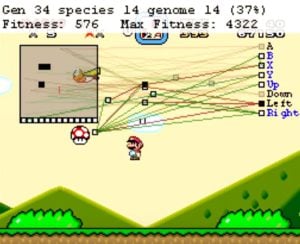This article is the second in a series on artificial neural networks (ANNs).
In my previous article, I said that artificial neural networks, despite having mostly fallen off the excitation curve in the 1960’s, are now a buzzword that’s back with vengeance 🙂
Why? Because modern computing capabilities and know-how have made ANNs’ possibilities of seem endless. Some of those possibilities are not necessarily optimistic, and I’ll cover them in the next article.
Right now, I’d like to go into more detail on how modern computing capabilities are actually allowing ANNs to work closer to how they were originally envisioned. I think that is what is putting ANNs back on the buzzword map today – and there’s a sense that we’re just getting warmed up.
But don’t take my word for it. You’re probably already using ANNs yourself.
Here are a few examples:
Google Translator uses an ANN to understand what you wrote – in its own language!
Recently there was an interesting story about how Google Translator takes a text in the source language, translates it into its own an ANN-generated language as an intermediate step, and then translates from that into the target language.
Google Image Search relies on an ANN to identify untagged pictures.
It may be obvious to you that a picture of a neuron, for example, actually represents a neuron – even if it isn’t explicitly labeled as such. But have you thought about why that is?
Maybe because you know that neurons have certain key visual features and this picture also has these key features. And how did you originally know those features? You learned them.
For Google Image Search to perform the same function – identifying an untagged picture of a neuron – it would also need to learn a neuron’s key visual features. And it relies on an ANN to do so.
Your computer game was probably created – and tested – with an ANN.

To create a virtual location in a complicated 3D game, a game designer can ask an ANN to handle it. The basic input goes something like: “create a map with a small town, hills, and a lake.”
ANNs are also used to test games. The computer simply plays the game itself. Just watch this one play Super Mario Brothers.
Do the above examples really mean we’re just getting started with ANNs? I think it’s safe to say we are. Here are a few increasingly popular ANN applications that haven’t hit the mainstream just yet:
-
Computer safety involving biometry, e.g. facial recognition and fingerprint scans, relies on artificial neural networks.
-
Self-driving cars that teach themselves to drive with ANNs.
-
Business decision-making, e.g. in trading programs using algorithms within ANNs. These algorithms tend to react to each other and can cause unpredictable results such as drastic asset price fluctuations.
-
Medical diagnostics involving imaging generate vast quantities of data that ANNs can help us learn from. With their help it may soon be possible, for example, to identify degenerative or cancerous cells.
So, there’s the (mostly) good side of ANNs. In the next article I’ll cover what many people consider the dark side.





